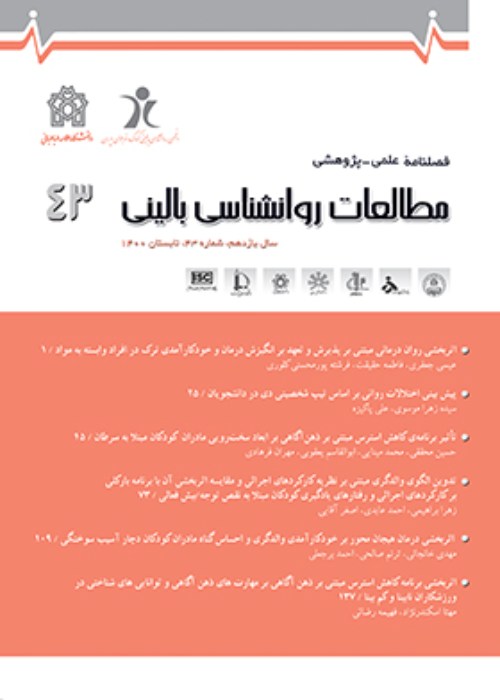A Study of the Role of Individual and Family Factors in Conduct Disorder: Meta-Analysis of Studies Previously Done in Iran
Author(s):
Abstract:
The aim of this study is to quantitatively combine the theses about the individual and family factors influencing conduct disorder. For this purpose, meta-analysis was used as a statistical technique to identify, collect, combine, and summarize the research findings related to the role of effective factors on conduct disorder. The population of research included studies that had been done in Iran about effective factors of conduct disorder in children and adolescents, and the sample included all theses done in this field at the universities of Tehran (20 theses). The mean effect size (r) in individual factors was 0.33 in fixed effects model and 0.37 in random effects model while the mean effect size (r) in family factors was 0.05 in fixed effects model and 0.04 in random effects model. According to Cohen's criteria, the effect size of individual factors and family factors were below the average and low, respectively. But, in the investigation of separative effect size of factors, variables social skills, life skills, guilt feel, being a working child, academic achievement, internal-external attributions, planning-organizing ability, attention to class, mental state of parents, their marital satisfaction, their substance abuse and self-esteem were high and significant due to Cohen's standards. Because of the significance of Q statistic which resulted from the heterogeneity of studies, sex, measuring instruments, sampling method, and age variables were entered into the analysis as confounding variables. Z-test of the studies related to individual factors showed that the effect size was significant for all intervening variables. In contrast, z-test of the studies on family factors showed it to be significant only for variables of sex and measuring instruments. Due to the high mean of effect size in variables listed above, researchers and clinicians should consider the importance of these factors in evaluation and treatment of behavioral disorders in children and adolescents. They should also take note of the role of modulators listed above in their future studies.
Keywords:
Language:
Persian
Published:
Quarterly of Clinical Psychology Studies, Volume:3 Issue: 10, 2013
Page:
115
magiran.com/p1188788
دانلود و مطالعه متن این مقاله با یکی از روشهای زیر امکان پذیر است:
اشتراک شخصی
با عضویت و پرداخت آنلاین حق اشتراک یکساله به مبلغ 1,390,000ريال میتوانید 70 عنوان مطلب دانلود کنید!
اشتراک سازمانی
به کتابخانه دانشگاه یا محل کار خود پیشنهاد کنید تا اشتراک سازمانی این پایگاه را برای دسترسی نامحدود همه کاربران به متن مطالب تهیه نمایند!
توجه!
- حق عضویت دریافتی صرف حمایت از نشریات عضو و نگهداری، تکمیل و توسعه مگیران میشود.
- پرداخت حق اشتراک و دانلود مقالات اجازه بازنشر آن در سایر رسانههای چاپی و دیجیتال را به کاربر نمیدهد.
In order to view content subscription is required
Personal subscription
Subscribe magiran.com for 70 € euros via PayPal and download 70 articles during a year.
Organization subscription
Please contact us to subscribe your university or library for unlimited access!


